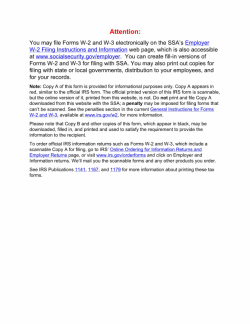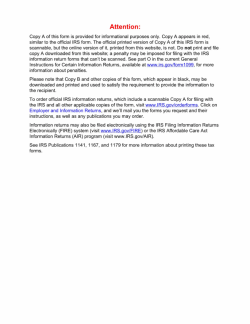When asked about income tax, Albert Einstein once said, “This is too difficult for a mathematician. It takes a philosopher.”
We think even a philosopher would agree that filing taxes is quite a complex and complicated process.
But before you even begin to file your tax returns, or consult with a tax professional to understand the next steps in the process, you should know which documents are necessary to begin filing.
For example, if you’re a salaried employee, your set of docs will differ from someone who is self-employed.
The same goes for where you are in life — if you have mortgage interests or student loans, then there are different sets of tax forms for that as well.
In this article, we’ll zero in on what kind of tax documents you should have on hand to properly file your tax returns, and how PandaDoc can help make the process easier.
Necessary tax documentation: Let’s go down the list
To begin with, there are certain documents that every taxpayer is required to have. Your social security number or tax ID number is top of the list, of course, and what follows are varying degrees of info across four categories:
- Personal Information
- Dependent(s) Information
- Sources of Income
- Types of Deductions
Income statements (including those listed in W2s and 1099s), expense receipts, past tax return records, and specifics about your investments — are all included within this list.
That said, not everything looks the same for every taxpayer, so let’s zoom in a little further.
The government wants to know you’re you
As it is with everything digital these days, you need to enter some part of your personal information to get started.
However, since we’re dealing with tax documents here, the personal information you need to share is a bit more…well, personal. Unless using a government-issued tax ID, a social security number is mandatory.
However, if you’re going through a broker or software like TurboTax to file, then you’ll need to also add proof of identity for yourself and any of your family members on the return — driver’s license, state ID card, passport, and so forth.
P.S: You’re not required to eFile or use a third party, btw — just simply go the old-fashioned route and drop your tax returns in the mail if you like.
And they really wanna know what you did last summer (and fall and winter and spring)
This United States imposes taxes based upon your citizenship, and not the fact that you may or may not reside in the U.S. at the moment.
For example, you can post up in Dubai for two years straight and would still have to pay U.S. taxes if you’re a citizen.
It goes without saying that almost every U.S. citizen needs to know the basic ins and outs of the tax system.
To begin with, here are a few documents that help the government clarify the sources through which you’ve received income.
Form W-2
Your employer will fill out this form for you. In case you’ve had multiple employers during the previous tax year, you’ll likely need to fill out multiple W-2 Forms.
And if one of those employers ends up making a mistake on the form, you should fill out a W-2c Form to remedy that mistake.

Form W2
Used 4872 times
The W2 form, also called a Wage & Tax Statement, is an IRS tax form that your company must send to each employee and to the IRS each year.
Use this template1099-R
1099-R are forms that must be filled out to record the money you received from other funds, such as a pension, retirement plan savings, Roth IRA, insurances, etc.

1099-MISC Form
Used 4872 times
The 1099-MISC Form is an IRS tax form used to report payments made from a company to contractors or consultants.
Use this templateForm W-2G
This one is usually an anomaly — unless you’ve been killing it at the casino. Form W-2G is used to document any and all the gambling winnings you incurred over the previous year.
Seriously, document all your income
This section is more relevant if you’re self-employed and have other, perhaps diversified, streams of income.
There are a couple of IRS forms that you’d need to fill out depending on the kind of money you’re receiving. Most of them fall under the 1099 classification.

For example:
- If you’re self-employed, you’ll need Form 1099
- If you’re unemployed then Form 1099-G is for you
- Mortgage interest statements are for Form 1099-INT
- Rental Income should be declared in Form 1099-K
- Sale of property or foreclosure is recorded in Form 1099-S and Form 1099-A
- And for social security benefits, you’ll need Form SSA-1099
These are just some of the more commonly used forms; there are other income streams too, such as money received from dividends, debt relief, broker transactions, etc., and these require additional documentation in order to file correctly.
And — equally serious here — be sure to catalog every expense!
Tax deductions are the deciding factor for your tax bill. So make sure you keep a good record of all the places that are eating away at your money.
Bigger ticket items such as mortgage interest, student loans, charitable donations, etc., are all-inclusive here. And these are the documents you’ll need to fill in the necessary information about your tax deductions:
- Form 1098-E for tuition loan interest
- Form 1098-T for all your tuition expenditure
- Form 1098 for mortgage interest payments
- Form 1098-C is for charitable donations
- and Form 1040ES is for the taxes you’ve paid
After all these expenses, if there’s anything you’ve left out — medical expenditures or additional educational costs, for example — then you can add them as another tax deductible expense.
Tax deductions are your silver lining
Having unknown expenses is common. More often than not, when you’ve hit a bump in the road you can write it off as a deductible expense.
For example, many self-employed professionals can write off their business expenses as tax deductible. The same goes for businesses themselves.
However, if you’re a salaried employee, you can file for additional costs like IRA contributions, charitable donations, educational expenses, and more as part of your additional deductions.
With that said, a word of advice: you’ll need to have a documented record of all your expenses while filing taxes to show proof that these things actually happened.
Making tax preparation easier
Back to where we began — yes, taxes are a hassle and will probably always be a hassle. However, it can definitely be less aggravating with the advancement of modern technology.
You can just input numbers and scanned copies of your documents online these days and your reliable software will do the rest for you. TurboTax is quite popular amongst the masses.
However, even if you implement the help of software, you still need a safe place where you can store all your documents and retrieve them quickly as needed.
The sheer amount of tax forms is simply too many to keep using the traditional method of saving all your files on the desktop — it’s too risky, and chances are, you’ll forget where you stored them.
This seems to be true especially if you’re a business that deals with multiple employees, clients, and freelancers — the process might overwhelm you.
Thankfully, at PandaDoc, we have just the solution you need. Instead of scrambling around for tax documents near your deadline, you can now safely upload all papers at one place, and sign your tax forms with the click of a button.
The process is now easier, faster, and simpler than ever before.
Frequently asked questions
-
In the United States, for the tax year 2022, your tax filing deadline occurs on April 18th if you live in any state except Massachusetts and Maine, and on April 19th if you reside within those two states.
-
The percentage of taxes you pay is dependent upon your income. There are different tax brackets for different income types; however, the scale begins at 10% and ends at 37%. Overall, there are seven different tax brackets.


